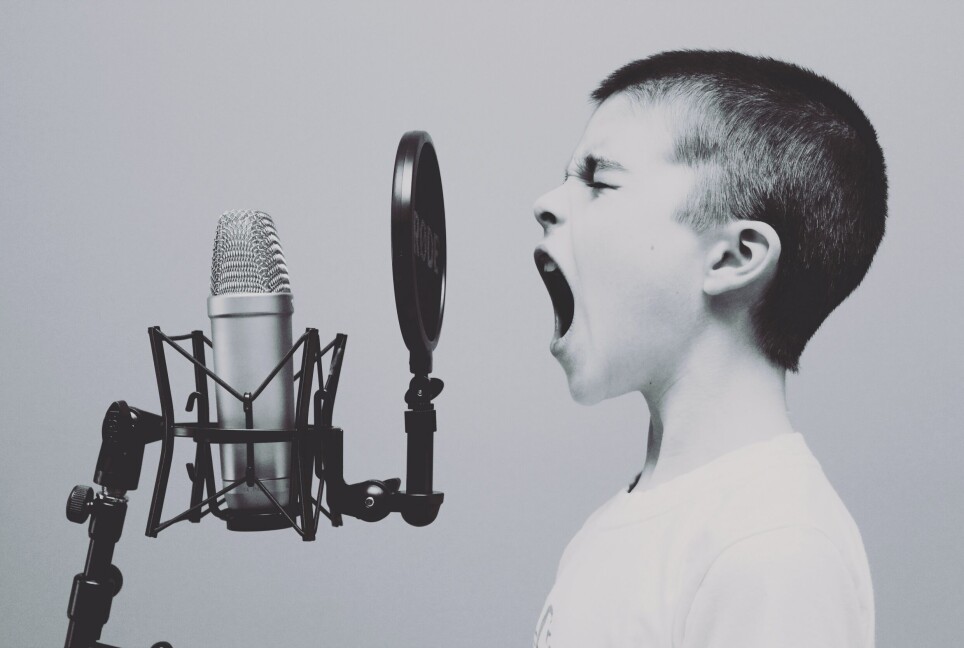THIS ARTICLE/PRESS RELEASE IS PAID FOR AND PRESENTED BY University of Oslo - read more

Why can we ignore many sounds, but not the human voice?
A limit in our attention means that we don’t detect every single sound. However, new research suggests that we almost always pay attention to the human voice.
What are the sounds you hear in an office? Sounds of colleagues typing on their keyboards, the photocopier being started, footsteps in the corridor, a notification sound from someone receiving an e-mail.
Merve Akça is a doctoral research fellow at the RITMO Centre for Interdisciplinary Studies in Rhythm, Time and Motion and conducts research on people’s attention to and perception of sound.
“We are quite good at hearing different sound sources and distinguishing them from each other. Maybe you can tell what type of shoes someone is wearing by listening to their footsteps, or even guess who is wearing them,” Akça says.

A limit to what we notice
In an open plan office, we can ignore some sounds and focus on what is important to us.
“We like to think that this is something we can do. But we know that there is a limit to how much information we can pay attention to,” Akça says.
One of these limits is called the ‘attentional blink’ in cognitive psychology and has been mostly used to find out what we are able to detect visually. Akça describes the blink as an attention limitation where images go undetected and sounds are not heard.
“One could say that your attention closes its eyes, metaphorically speaking. When we pay attention to information that comes in quick succession, there is a short window where our attention system seems to fail temporarily,” she says. “The window in which we miss information is assumed to be between two hundred to five hundred milliseconds. So, in a stream of different sounds, you are not going to notice the sounds that follow each other within this window."
Our voices are too important not to notice
Akca wanted to find out if our attention limit is inevitable, not only when we see images, but also when we hear sound.
“The human voice is a sound that is interesting to test in this context because it is special to us. For example, we know that a lot of information is communicated to us via the voice,” Akça says.
This autumn, she will defend her doctoral thesis Attending to Sounds in the Blink of an Eye, where she has investigated whether human voices, among other sounds, are less affected by our attention limit.
“The voice gives us many clues about who a person is, about gender and emotions, among other things. We create relationships and we communicate through it. Previous research tells us that voice recognition starts before birth. So, the human voice might be a sound that is too critical for us to avoid,” Akça explains.
Musical people detect their own instrument with ease
In order to investigate whether individual factors such as musicality could affect the attention limit, the participants in the study were divided into two groups of cellists: experts and novices.
The target sounds that participants were to detect were vowels from a human voice and tones from a cello. They were played together using a pure tone, a sound from an organ, and distracting background sounds from a modern environment and white noise.
“The cello was chosen because of its similarities with the human voice. Participants heard a series of short sounds that were played very quickly. Among 20 different sounds, they were supposed to pay attention to the two target sounds and report they heard the sound of a human voice,” Akça explains.
The researchers then found that musicality affected the ability to perceive instrumental tones.
“The cellists who were considered experts were good at detecting all sounds, including their own instrument, the organ and the human voice,” she says.
For the group of beginners, however, the sound of the cello was lost in the attentional blink when the sounds followed each other in quick succession. When there was a longer duration between the sounds, they managed to hear them.
“This shows that expert cellists have an attention advantage in detecting their own instrument,” she says.
The voice is least affected by the attention limit
“With regard to the human voice, the participants, regardless of their musical expertise, managed to detect the sound even when the sounds followed each other in quick succession,” Akça discovered. “It was easy for the participants to recognise the human voice and the pure tone. The explanation may be that the pure tone is acoustically easy to hear, while the human voice has its evolutionary significance."
The study also made it clear that the duration of the sound affected how well the participants perceived it.
The participants heard sounds that lasted 90 milliseconds and 30 milliseconds. By testing different durations, they were able to compare the results. In the study when musicality was controlled for, duration had no bearing on how well they heard the sounds.
“In the study where participants differed in their musicality levels, they also recognised the tones with the shortest duration. It was fascinating to see that one can recognise and detect sounds of such short duration,” Akça says.
Reference:
Merve Akça: Attending to Sounds In the Blink of An Eye, the University of Oslo, 2022.

This article/press release is paid for and presented by the University of Oslo
This content is created by the University of Oslo's communication staff, who use this platform to communicate science and share results from research with the public. The University of Oslo is one of more than 80 owners of ScienceNorway.no. Read more here.
See more content from the University of Oslo:
-
Researcher: "AI weakens our judgement"
-
New, worrying trend among incels, according to researcher
-
Ship’s logs have shaped our understanding of the sea
-
New study: The dilemma of copyright in the Global South
-
How your lifestyle affects your risk of bowel cancer
-
Muslims were pagans, according to the Norse sagas




































